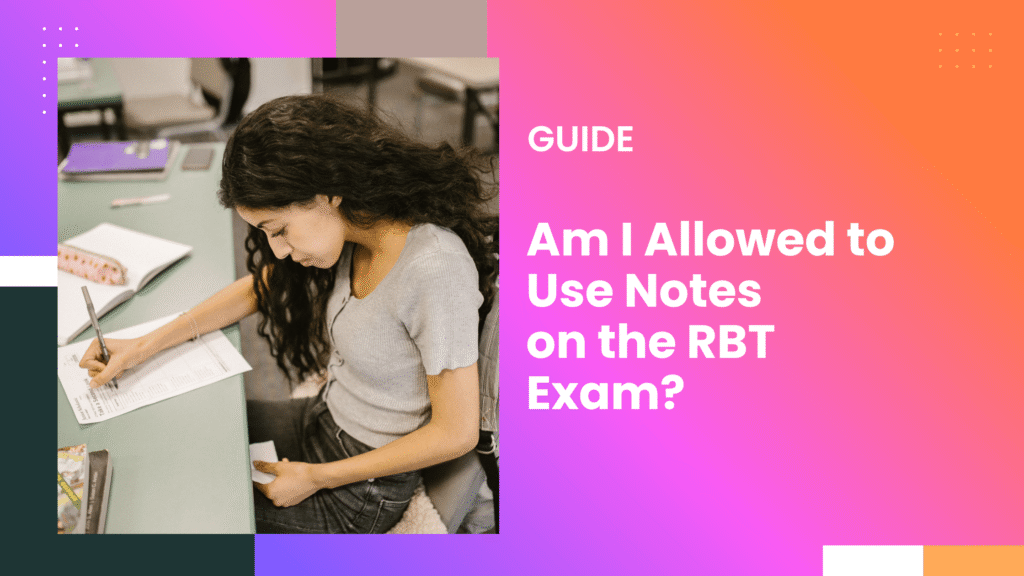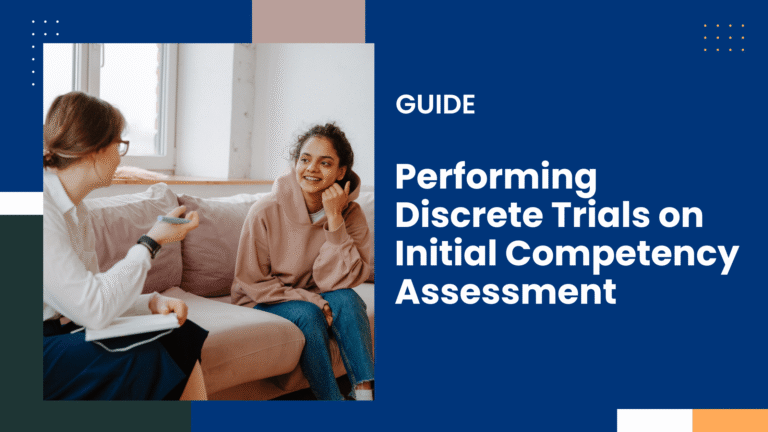Am I Allowed to Use Notes on the RBT Exam | No, Here’s a Trick

No, you aren’t allowed notes on the RBT exam. At Pearson VUE testing centers, all study materials are locked away. You’ll only get a dry-erase board for jotting quick reminders. Prepare by memorizing the RBT Task List and practicing without references.
Here’s the truth you need to know from someone who’s taken the test: you can’t bring notes or study materials into the RBT exam.
Why Notes Aren’t Allowed in the Exam?
The Behavior Analyst Certification Board (BACB), which oversees the exam, has strict rules about testing materials.
Here’s what happens when you arrive at a Pearson VUE testing center:
- You check in and hand over your ID and any belongings.
- Phones, bags, and any notes or written materials must be locked in a secure locker.
- The proctor checks you (sometimes even pat-downs and metal detectors for electronics).
- Once you’re seated, you’re only allowed to have the test computer and a dry-erase board.
This isn’t just to make it hard on you.
The BACB designs the RBT exam to test your retained knowledge and judgment, not your ability to reference notes. It’s similar to other professional certifications, no books, no handwritten sheets, nothing but your brain and what you’ve practiced.
If you want to be exam-ready, I have created flashcards and a mock test quiz. You can check it here.
My Personal Experience
When I walked into my first exam attempt, I carried a folder full of flashcards.
A proctor smiled and said, “Those can stay in the locker.” Every fact I needed had to already be in my head.
I wasn’t alone.
On Reddit, one RBT shared: “No notes on the exam… You do get a whiteboard, though, so you can jot down whatever you’ve memorized once the test starts.”
That’s exactly what I did. The moment I sat down, I grabbed the provided dry-erase board and quickly wrote out acronyms and task list reminders before answering the first question.
How the Dry-Erase Board Works?
The trick I mentioned before is to write down on your board the words and definitions you aren’t comfortable with, and you know for sure aren’t gonna stay in your memory for long.
Every candidate receives a small dry-erase board and marker. You can use it for:
- Writing down keywords you memorized (e.g., reinforcement schedules, data collection terms).
- Working through scenario-based questions.
- Drawing diagrams for chain analysis or skill acquisition planning.
The board gets wiped clean if you take a break or finish the exam, so it’s temporary.
But it’s a lifesaver when you’re trying to offload mental notes.
How to Prepare Without Notes?
Since you can’t bring study sheets, your prep strategy has to change, and your brain must be ready:
- Master the BACB RBT Task List: This is the blueprint for 100% of your exam questions.
- Use flashcards daily: I made over 200 and ran through them until I could answer without hesitation.
- Take timed practice tests: Pearson’s format is multiple-choice and scenario-heavy. Mock exams get you used to thinking fast without references.
- Teach the material: I’d explain concepts to a friend — if you can teach it, you know it.
- Drill memory aids: Acronyms and visual mind maps stick better than raw text.
From experience, this kind of preparation is more effective than relying on physical notes.
When you’re confident enough to explain any concept without looking it up, you’re exam-ready.
Common Misconceptions About the Exam
- “Maybe I can sneak sticky notes in my pocket.” Nope, the check-in process catches everything.
- “What about digital notes on my phone?” Phones aren’t allowed in the room.
- “Can I bring a printed BACB Task List?” The same rule applies — no external references.
Final Word from Someone Who’s Been There
You can’t bring notes into the RBT exam.
But here’s the upside: with focused practice and memory tools, you won’t need them.
I walked in thinking I’d blank out without my sheets. Instead, thanks to repetition and using that dry-erase board, I passed comfortably.
Others who’ve been through it on forums say the same: study hard, use mnemonic devices, and get used to thinking without physical aids.
That’s how you truly prepare for the exam, and it’s the only way to pass when you’re not allowed to bring notes.






